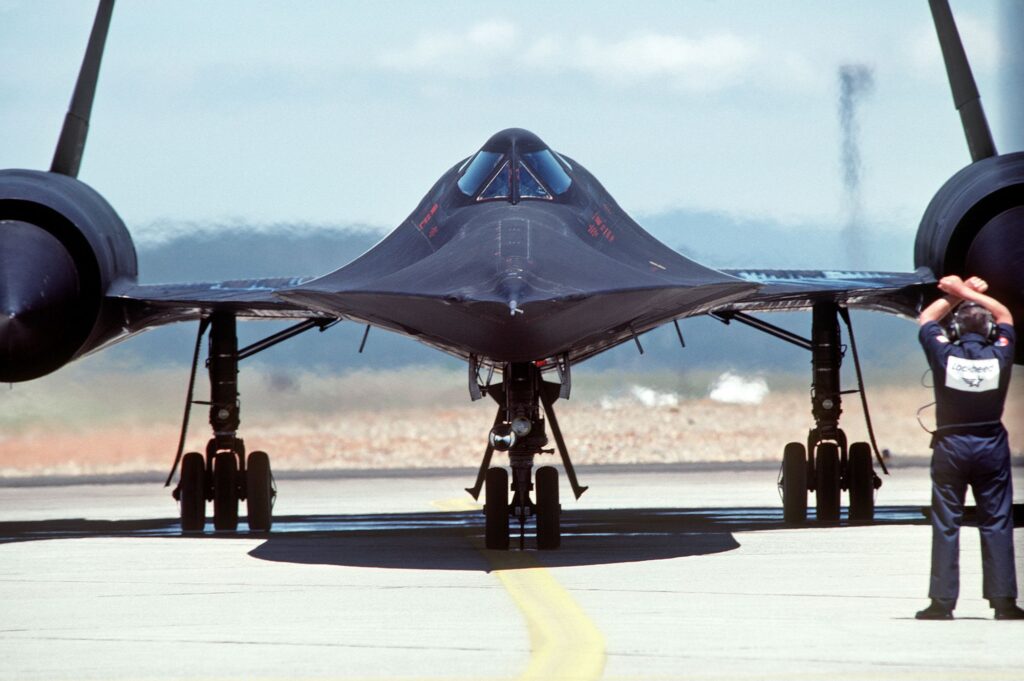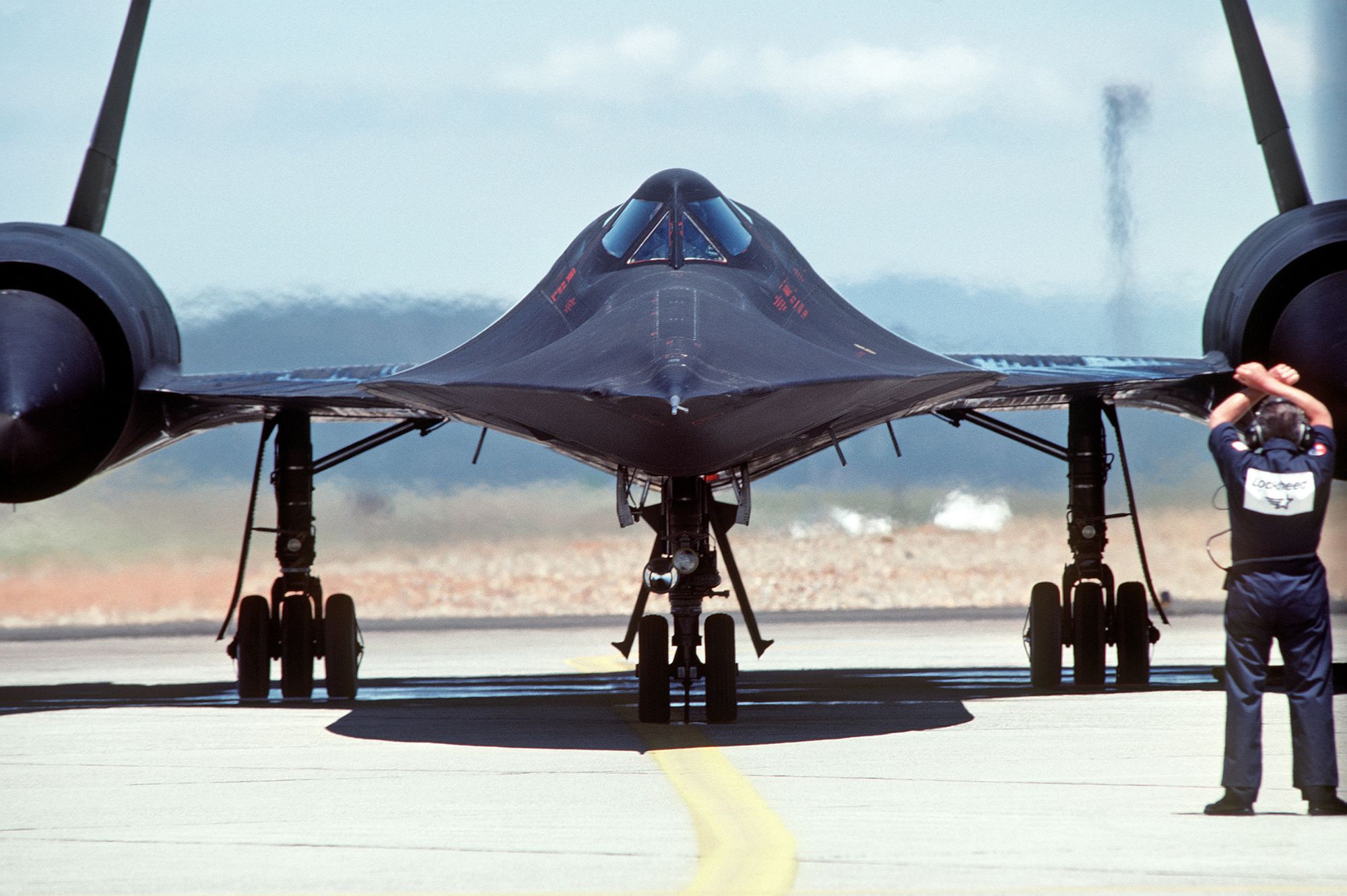
SR-71 Blackbird: The Cold War Icon and Its Enduring Legacy
The SR-71 Blackbird remains one of the most iconic and technologically advanced aircraft ever built. Developed during the height of the Cold War, this strategic reconnaissance aircraft pushed the boundaries of aerospace engineering and operational capabilities. Its sleek, black design and unparalleled speed captivated the public imagination, while its classified missions played a crucial role in gathering intelligence during a tense global standoff. This article explores the history, technology, and enduring legacy of the SR-71 Blackbird, a true marvel of aviation.
Development and Design
The story of the SR-71 Blackbird begins with its predecessor, the A-12. Designed by Lockheed’s Skunk Works team, led by the legendary Kelly Johnson, the A-12 was developed to replace the U-2 spy plane, which had become vulnerable to Soviet surface-to-air missiles. The A-12’s primary mission was to conduct high-altitude, high-speed reconnaissance over enemy territory. Recognizing the need for an even more advanced aircraft, the US Air Force initiated the SR-71 program.
The SR-71 Blackbird was a significant evolution of the A-12 design. Key improvements included increased payload capacity, enhanced sensors, and improved electronic countermeasures. The aircraft’s distinctive shape and materials were crucial for achieving its record-breaking performance. The SR-71 Blackbird was primarily constructed of titanium alloy, which was necessary to withstand the extreme temperatures generated by sustained Mach 3+ flight. Acquiring the titanium was a challenge in itself, as much of it was sourced from the Soviet Union through covert operations.
The SR-71 Blackbird’s design incorporated several innovative features to manage the extreme heat. The dark black paint, which gave the aircraft its name, helped to radiate heat. The corrugated skin allowed the aircraft to expand and contract with temperature changes. The engines, Pratt & Whitney J58s, were specially designed to operate at high speeds and altitudes, using a unique bypass system that allowed them to function as ramjets at supersonic speeds. These engines were crucial to the **SR-71 Blackbird’s** unprecedented performance.
Operational History
The SR-71 Blackbird entered service in 1966 and quickly became a vital asset for the United States. Based at Beale Air Force Base in California, as well as forward operating locations around the world, the SR-71 Blackbird conducted reconnaissance missions over Vietnam, North Korea, the Middle East, and other strategically important regions. Its high speed and altitude made it virtually invulnerable to interception. No SR-71 Blackbird was ever shot down by enemy fire, a testament to its design and the skill of its pilots and reconnaissance systems officers (RSOs).
SR-71 Blackbird missions were often long and demanding, requiring pilots and RSOs to endure extreme conditions. The aircraft’s cockpit was pressurized, but pilots still had to wear full pressure suits to protect them from the effects of high-altitude flight. The aircraft’s high speed also meant that navigation and target acquisition were extremely challenging, requiring specialized training and equipment.
The information gathered by the SR-71 Blackbird was invaluable to policymakers and military planners. Its advanced sensors could detect and track enemy movements, assess damage after air strikes, and monitor compliance with arms control treaties. The SR-71 Blackbird provided critical intelligence during periods of heightened tension, helping to prevent misunderstandings and miscalculations that could have led to conflict. The **SR-71 Blackbird** was a key asset during the Cold War.
Technological Innovations
The SR-71 Blackbird was a technological marvel that pushed the boundaries of aerospace engineering. Its development required breakthroughs in materials science, propulsion, and avionics. The aircraft’s titanium structure, advanced engines, and sophisticated sensors represented significant advances in their respective fields.
One of the most remarkable aspects of the SR-71 Blackbird was its ability to fly at speeds exceeding Mach 3. This required the development of new materials that could withstand the extreme heat generated by air friction. The titanium alloy used in the SR-71 Blackbird’s construction was specially formulated to resist deformation and maintain its strength at high temperatures. The aircraft’s corrugated skin allowed it to expand and contract without buckling, further enhancing its structural integrity.
The SR-71 Blackbird’s Pratt & Whitney J58 engines were another technological breakthrough. These engines were designed to operate as both turbojets and ramjets, allowing the aircraft to accelerate to supersonic speeds and maintain them for extended periods. The engines used a unique bypass system that allowed them to divert air around the core of the engine at high speeds, effectively turning them into ramjets. This system provided the SR-71 Blackbird with the thrust it needed to reach and sustain Mach 3+ flight.
The **SR-71 Blackbird** also featured advanced sensors that could collect a wide range of intelligence data. These sensors included cameras, radar systems, and electronic intelligence (ELINT) equipment. The cameras could capture high-resolution images of targets on the ground, while the radar systems could detect and track moving objects. The ELINT equipment could intercept and analyze enemy communications, providing valuable insights into their intentions and capabilities.
Retirement and Legacy
The SR-71 Blackbird was retired from service in 1990, due to a combination of factors, including budget cuts and the availability of satellite reconnaissance systems. The aircraft was briefly reactivated in the mid-1990s, but it was permanently retired in 1998. Despite its relatively short service life, the SR-71 Blackbird left an indelible mark on aviation history.
The SR-71 Blackbird’s legacy extends beyond its technological achievements and operational successes. The aircraft has become a symbol of American ingenuity and technological prowess. Its sleek, black design and record-breaking performance have captured the imagination of generations of aviation enthusiasts. The SR-71 Blackbird has been featured in numerous books, movies, and television shows, cementing its place in popular culture.
The lessons learned from the SR-71 Blackbird program have had a lasting impact on aerospace engineering. The technologies developed for the aircraft have been applied to a wide range of other projects, including commercial aircraft, spacecraft, and missiles. The SR-71 Blackbird’s legacy continues to inspire engineers and designers to push the boundaries of what is possible.
Even in retirement, the **SR-71 Blackbird** continues to fascinate and inspire. Examples of the aircraft are on display at museums around the world, allowing visitors to marvel at its design and learn about its history. The SR-71 Blackbird remains a testament to the power of human innovation and the enduring quest for knowledge.
The **SR-71 Blackbird** was a truly remarkable aircraft. Its speed, altitude, and technological capabilities were unmatched during its service life. It remains one of the most iconic aircraft ever built. The **SR-71 Blackbird’s** missions were critical to national security.
The **SR-71 Blackbird** is a symbol of innovation. The **SR-71 Blackbird’s** design was revolutionary. The **SR-71 Blackbird** pushed the boundaries of what was possible. The **SR-71 Blackbird’s** legacy continues to inspire. The **SR-71 Blackbird’s** retirement marked the end of an era.
The **SR-71 Blackbird** was an engineering masterpiece. The **SR-71 Blackbird** was a Cold War icon. The **SR-71 Blackbird’s** story is one of innovation and daring. The **SR-71 Blackbird** will always be remembered.
[See also: U-2 Spy Plane: History and Legacy]
[See also: Cold War Aviation: Key Aircraft and Missions]
[See also: The Skunk Works: Lockheed Martin’s Secret Design Lab]

